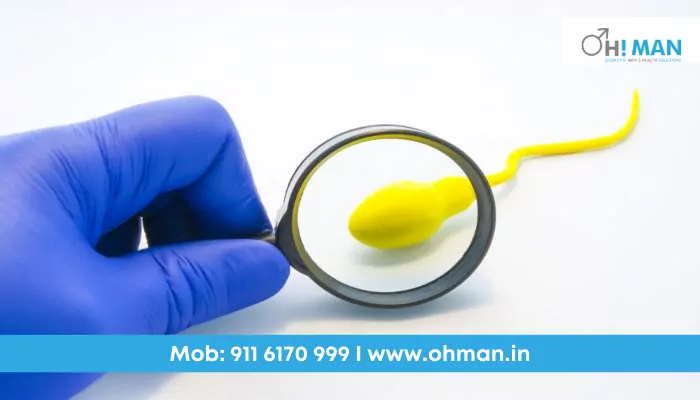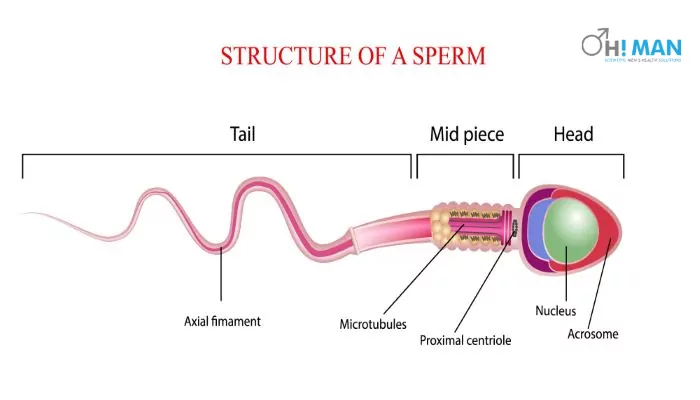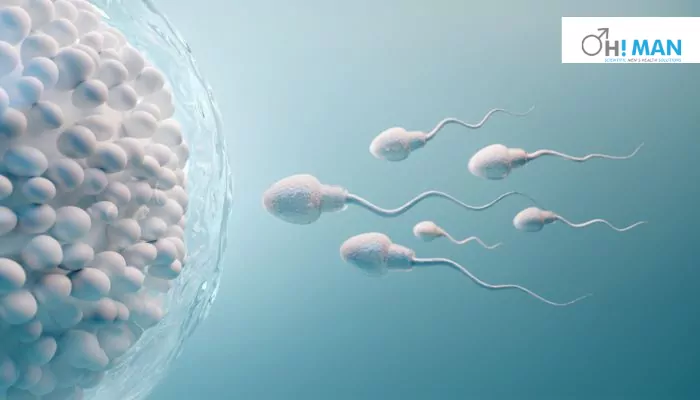Asthenozoospermia : A Complete overview on Causes &Treatment
Asthenozoospermia : A Complete overview on Causes &Treatment

Asthenozoospermia also referred to as asthenospermia, does reduced sperm motility marked as a medical disorder. Sperm motility is a marker of how effectively sperm travel and is a crucial reproductive component. Sperm with low motility may have difficulty reaching and fertilizing an egg.
Asthenozoospermia is a frequent cause of men’s infertility. Further, it is thought to afflict a significant percentage of infertile males. Additionally, there are numerous potential causes of asthenozoospermia. Asthenospermia causes may include hereditary factors, infections, and exposure to specific chemicals or medications.
Can my partner get pregnant with asthenozoospermia?
If you have asthenozoospermia, visiting a specialist in male infertility treatment is essential. Further, the Asthenozoospermia treatment may increase a man’s chances of fatherhood.
The condition is more prevalent in males with kidney problems, cystic fibrosis, or other genetic disorders. Further, men with such conditions may still have a baby via In Vitro Fertilisation, perhaps if motility is compromised and sperm quality remains normal.
Table of Content –
Understanding The Sperm Structure
A normal sperm structure has three fundamental components: the head, the midsection, and the tail.
- The biggest portion of sperm, the head, comprises the nucleus, which stores the chromosomes.
- The midpiece is placed between the head and the tail and houses the sperm’s energy-producing mitochondria.
- The longest portion of sperm, the tail, helps for movement.
The sperm’s head carries the nucleus, enclosed by the acrosome. The acrosome is a sac-like structure that houses enzymes used for egg penetration. Additionally, the head includes chromatin, which comprises DNA and proteins.
The sperm’s midsection includes the mitochondria, which generate energy for the sperm. The axoneme also encircles the midsection, which is a structure that helps in offering support and movement.
The longest component of the sperm is its tail, which assists propulsion. Further, the flagellum, enclosed by the plasma membrane, forms the tail. The whip-like structure, known as the flagellum, helps in the movement of sperm.
When assessing sperm health, doctors often look at the following factors:
- Motility of Sperm
- Volume of Sperm
- Sperm Morphology
- Acrosome response
- The sperm’s ability to reach the egg via the cervical mucus

Asthenozoospermia Causes
1. Inflammation
If you have an inflammatory condition within your prostate gland, sperm duct, or any other section of your sexual system, sperm motility will reduce. Some microorganisms associated with these conditions will directly impact your sperm count and motility. Further, it would also lower the pace at which your sperm travels and their capacity to fertilize an egg.
2. Varicocele
Varicocele is a disorder characterized by swollen veins in the scrotum. Additionally, this is one of the leading causes of male asthenozoospermia.
3. Unusual semen liquefaction
This problem constricts the gaps within your sperm ducts and impedes the mobility and functioning of your sperm.
4. Chromosomes Abnormalities
If there are sex chromosome abnormalities, your motility and sperm count will be affected. Additionally, this is a significant cause of male infertility.
5. Immunological components
Several antibodies may impede the motility of sperm in various ways. Numerous investigations have demonstrated that the existence of these anti-sperm antibodies prevents sperm from fertilizing the egg.
6. Lifestyle considerations
If you lead an unhealthy lifestyle and consume unhealthy food, this might cause poor sperm motility. Additionally, tobacco use, alcohol use, inactivity, a poor diet, and medicines that reduce testosterone levels are some of the undesirable lifestyle choices.
In addition, if you have a job such as traveling or horseback riding that primarily impacts your pelvic region, this may be a significant cause of asthenozoospermia.
Types Of Asthenozoospermia
Based on the percentage of immotile sperm present in a sample, the asthenozoospermia types may include:
- Mild-to-moderate asthenozoospermia: This level is identified when the percentage of immotile or poorly motile sperm varies from 60 to 75 percent.
- Severe asthenozoospermia: A severe case of asthenozoospermia might be determined if the proportion of immotile sperm is between 75 and 80 percent or greater.
Asthenozoospermia Treatment
Low sperm motility is thus a crucial cause of male infertility. Seventy percent of your sperm must be motile following ejaculation. You have asthenozoospermia if your proportion of motile sperm following ejaculation is less than 40 percent.
Men suffering from asthenozoospermia have access to various therapies. Listed below are some of the treatments:
The following dietary and lifestyle modifications may improve asthenospermia:
- consuming a nutritious diet rich in fruits, veggies, and whole grains
- avoid eating processed meals, drinking sugary beverages, and consuming excessive alcohol
- exercising regularly
- quitting smoking
- controlling anxiety
- avoiding toxic exposure (such as pesticides and heavy metals)
In most instances, asthenozoospermia treatment is possible by solving the underlying medical issue. Varicocele surgery, for example, may increase sperm quality in males with the disorder.

Some other possible asthenozoospermia treatments include:
Artificial insemination: Via artificial insemination, a specimen of sperm from a former donor or couple is injected into a woman’s womb around ovulation. This procedure is only advised if the woman is under 35 and has no infertility difficulties.
In-Vitro Fertilization: This is a method wherein the doctor combines a female egg with a sample of augmented sperm in the lab. Further the entire process takes place in a setting to achieve fertilization success.
Intracytoplasmic Sperm Injection: ICSI is a critical technique wherein the doctor retrieves a viable sperm from your testicles. So by using a tiny needle, the physician will implant the sperm straight into the mature egg of your female partner following collecting it.
How To Improve Sperm Motility?
The idea that food and exercise have little influence on sperm motility is widespread. Yet, there are some things men may do to boost sperm motility naturally.
Additionally the idea that food and exercise have little influence on sperm motility is widespread. Yet, there are some things men may do to boost sperm motility naturally.
Diet:
The first approach is to consume a nutritious diet. Further, a diet high in antioxidants enhances sperm motility. Antioxidant-rich foods comprise dark, leafy green vegetables, berries, and dark chocolate.
In addition, consuming foods that are low in saturated and trans fats might enhance sperm motility. Avoid eating meats, dairy items with high-fat content, and fried meals.
Lastly, males should consume an adequate amount of zinc. Zinc is a critical component for sperm health and may enhance sperm motility. Oysters, meat, and pumpkin seeds are all great sources of zinc.
Exercise:
Physical activity is also essential for sperm health. Further, physically active men have greater testosterone, which is important for sperm count.
Additionally, exercise may help lower stress levels since stress inhibits sperm motility.
Men should also avoid hot pools and saunas. These may increase testicular warmth, which might adversely affect sperm motility.
Final Say
Numerous variables may impact male fertility. Low sperm motility may result in conception if the sperm is otherwise viable. Employing reproductive technologies such as in-vitro fertilization (IVF) and intrauterine insemination (IUI) may enhance the likelihood of conception. It’s because they eliminate the need for sperm to swim independently.
If you face infertility issues due to erectile dysfunction or premature ejaculation, then Ohman specialists can offer the best erectile dysfunction medication and premature ejaculation medication. Book an online consultation and let our specialists assess your health condition and offer the proper treatment.
Frequently Asked Questions
1. Can I get pregnant with asthenozoospermia?
If asthenozoospermia is mild to moderate, there seems to be a possibility of establishing a natural pregnancy. Nevertheless, if sperm motility is substantially impaired, fertility treatments such as IVF or other ART treatments would be the only way to conceive.
2. How do you overcome asthenozoospermia?
IVF/ICSI are effective methods to help your partner conceive. Further, men may adopt other natural practices like a good diet, being physically active, and regularly exercising.
3. What is medicine for asthenozoospermia?
As of today, there are no medication or asthenozoospermia tablets. Clomiphene Citrate medication is beneficial for women dealing with fertility issues. However, the effect of this medication on men has mixed results, and hence there is no authorization to use this medication.



